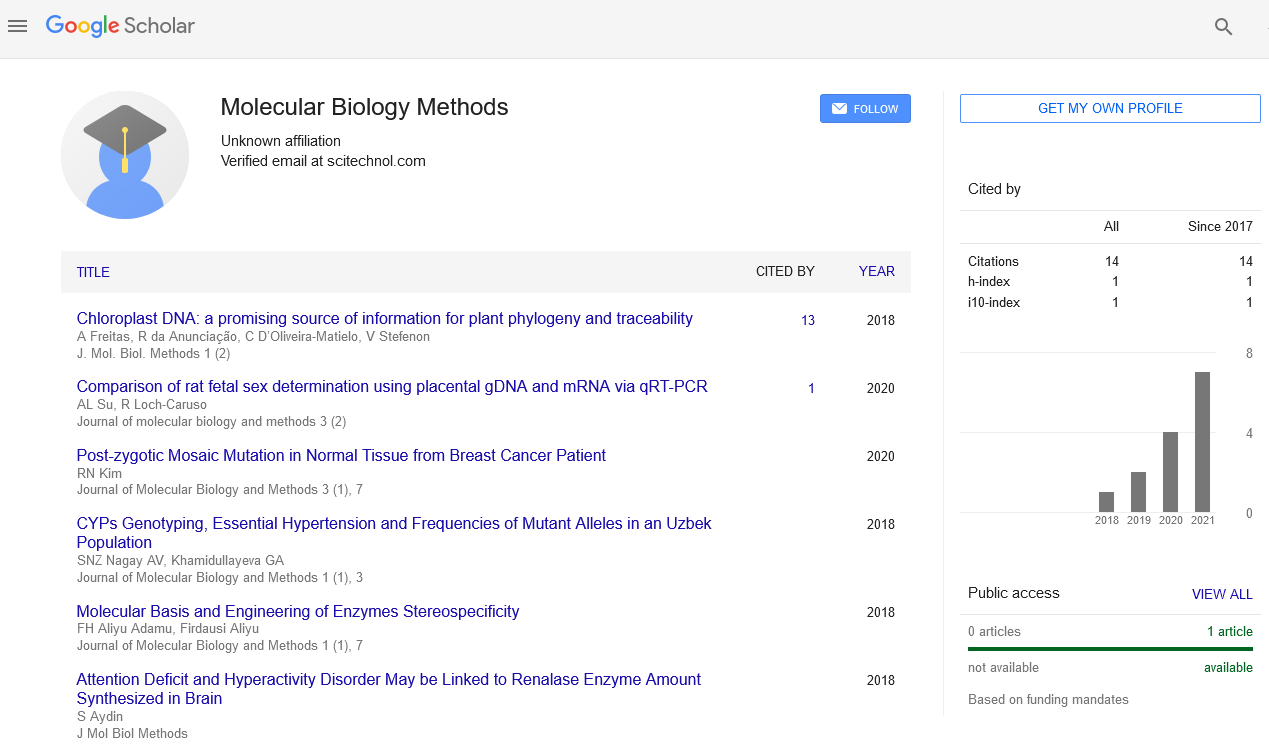Commentary, J Mol Biol Methods Vol: 7 Issue: 3
An Overview on Microbiology: The Science of Microorganisms
John Sharpe*
1Department of Microbiology, University of Zurich, Zurich, Switzerland
*Corresponding Author: John Sharpe,
Department of Microbiology, University of Zurich, Zurich, Switzerland
E-mail: sharpejohn@edu.ch
Received date: 26 August, 2024, Manuscript No. JMBM-24-151571;
Editor assigned date: 28 August, 2024, PreQC No. JMBM-24-151571 (PQ);
Reviewed date: 11 September, 2024, QC No. JMBM-24-151571;
Revised date: 18 September, 2024, Manuscript No. JMBM-24-151571 (R);
Published date: 25 September, 2024 DOI: 10.4172/JMBM.1000169
Citation: Sharpe J (2024) An Overview on Microbiology: The Science of Microorganisms. J Mol Biol Methods 7:3.
Description
Microbiology is the branch of science that deals with the study of microorganisms, which are tiny, often microscopic organisms that exist all around us. These include bacteria, viruses, fungi, algae and protozoa. Though they are invisible to the naked eye, microorganisms play an important role in the environment, human health and various industrial processes. The field of microbiology encompasses various disciplines, including medical microbiology, environmental microbiology, industrial microbiology and food microbiology, each focusing on different aspects of these diverse organisms.
Microorganisms are incredibly diverse and can be found in a wide range of environments, from extreme conditions like hot springs and deep-sea vents to the human body. This adaptability is due in part to their small size, which allows them to use various ecological niches. Bacteria, for instance, are prokaryotic cells, meaning they lack a nucleus and other membrane-bound organelles. They can reproduce rapidly, sometimes within minutes, allowing for quick population increases. This rapid growth can be beneficial in certain applications, such as biotechnology, where genetically modified bacteria are used to produce insulin, antibiotics and other valuable compounds.
Viruses, though not considered living organisms in the traditional sense, are essential players in microbial ecology. They consist of genetic material encased in a protein coat and require a host cell to replicate. Viruses can infect a wide variety of organisms, including bacteria (bacteriophages), plants and animals. Their interactions with host organisms can have significant implications for health and disease, as well as ecological dynamics.
The study of microbiology is particularly important in the medical field. Understanding pathogenic microorganisms enables the development of vaccines and antibiotics, which have saved countless lives. For instance, the discovery of penicillin by Alexander Fleming revolutionized the treatment of bacterial infections. However, the emergence of antibiotic-resistant bacteria poses a significant challenge to public health today. This phenomenon is primarily driven by the overuse and misuse of antibiotics, making it important for microbiologists to develop new strategies for combating resistant strains and understanding their mechanisms.
Environmental microbiology focuses on the role of microorganisms in natural ecosystems and their interactions with the environment. Microbes are integral to biogeochemical cycles, such as the carbon and nitrogen cycles, where they help decompose organic matter and recycle nutrients. Additionally, microbial processes can be used for bioremediation, a method that uses microbes to clean up contaminated environments. For example, certain bacteria can break down oil spills or detoxify heavy metals, demonstrating the potential of microorganisms in addressing environmental challenges.
Food microbiology is another vital aspect of the field, focusing on the role of microorganisms in food production, preservation and safety. Fermented foods rely on specific strains of bacteria and yeasts to develop unique flavors and textures. However, foodborne pathogens can pose significant health risks, making it essential to understand how to prevent contamination and ensure food safety.
In conclusion, microbiology is a multifaceted field that is fundamental to our understanding of life on Earth. The study of microorganisms encompasses a wide range of applications, from health and disease to environmental sustainability and industrial processes. As we continue to study the microbial world, the implications of our discoveries will shape our approach to health care, environmental management and biotechnology. Understanding the intricate relationships between microorganisms and their environments will be important for addressing global challenges, including disease antibiotic resistance and environmental degradation.
 Spanish
Spanish  Chinese
Chinese  Russian
Russian  German
German  French
French  Japanese
Japanese  Portuguese
Portuguese  Hindi
Hindi 